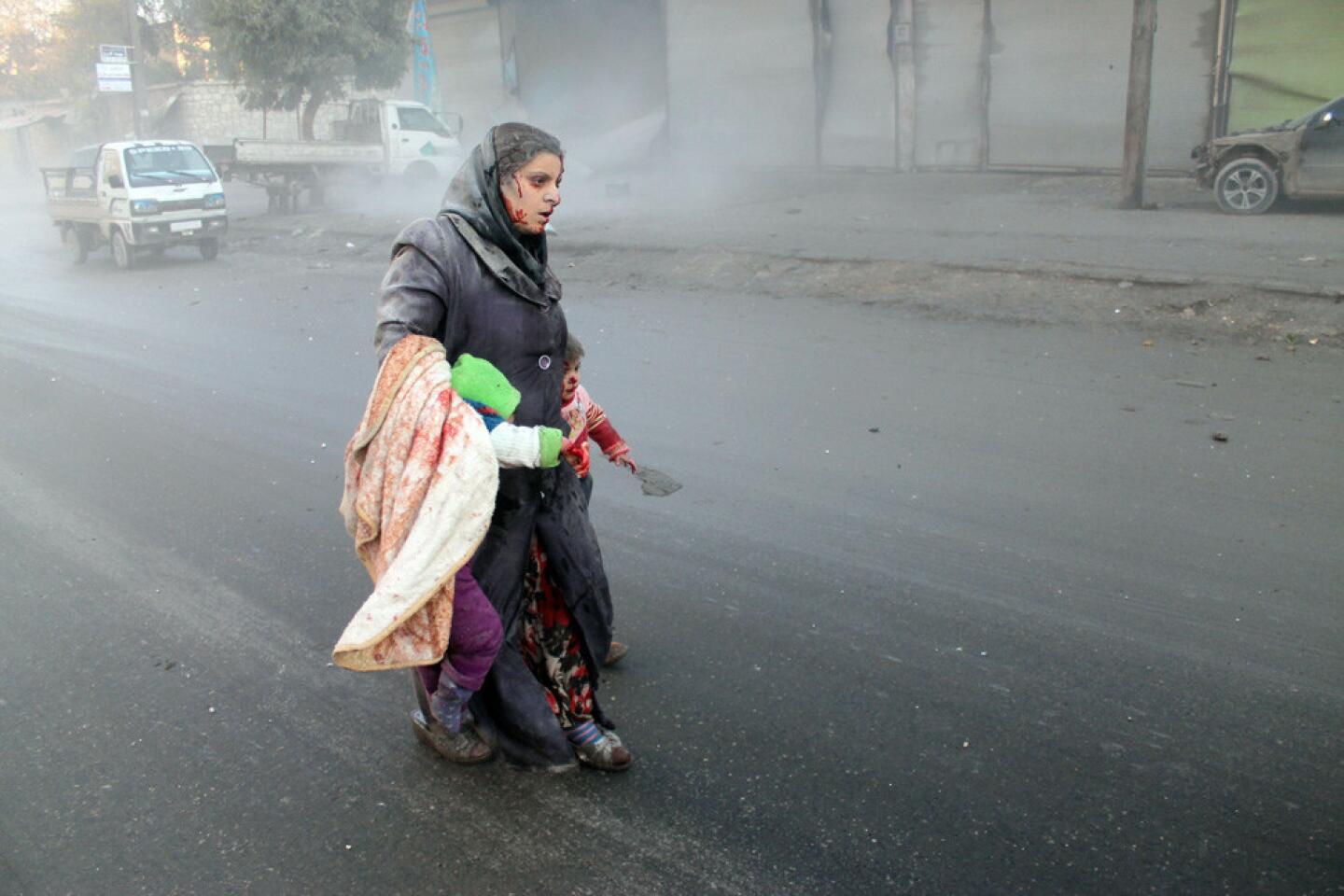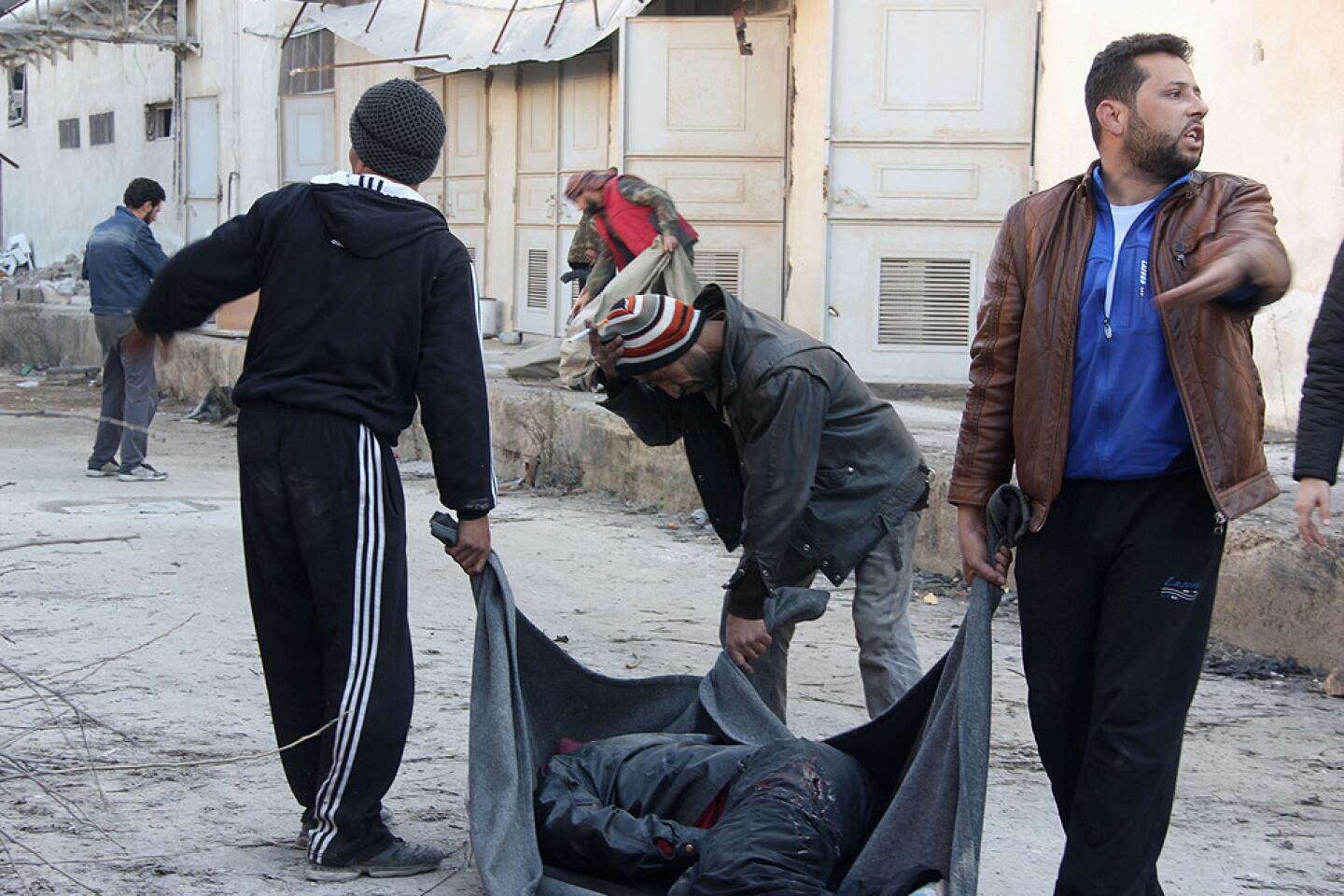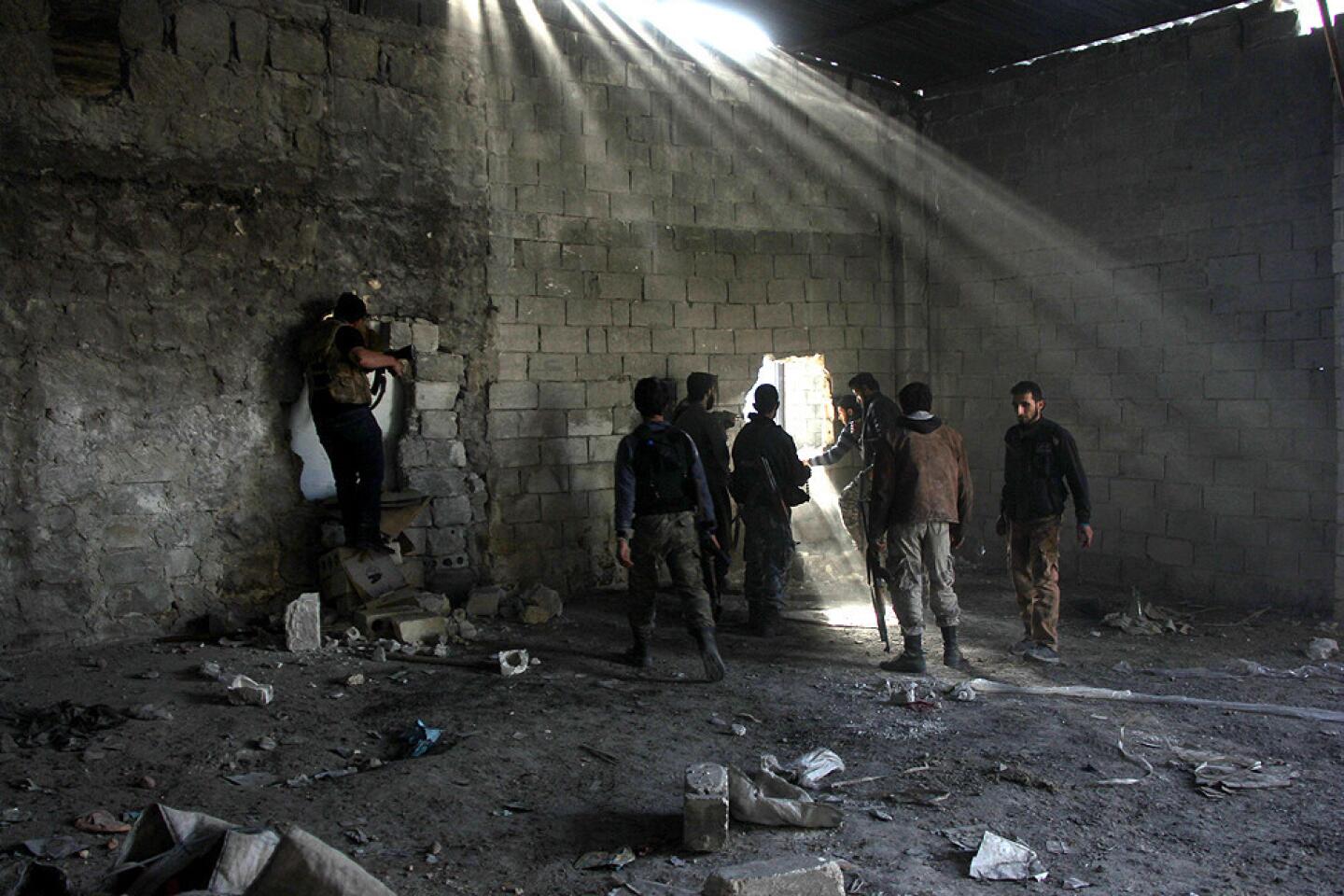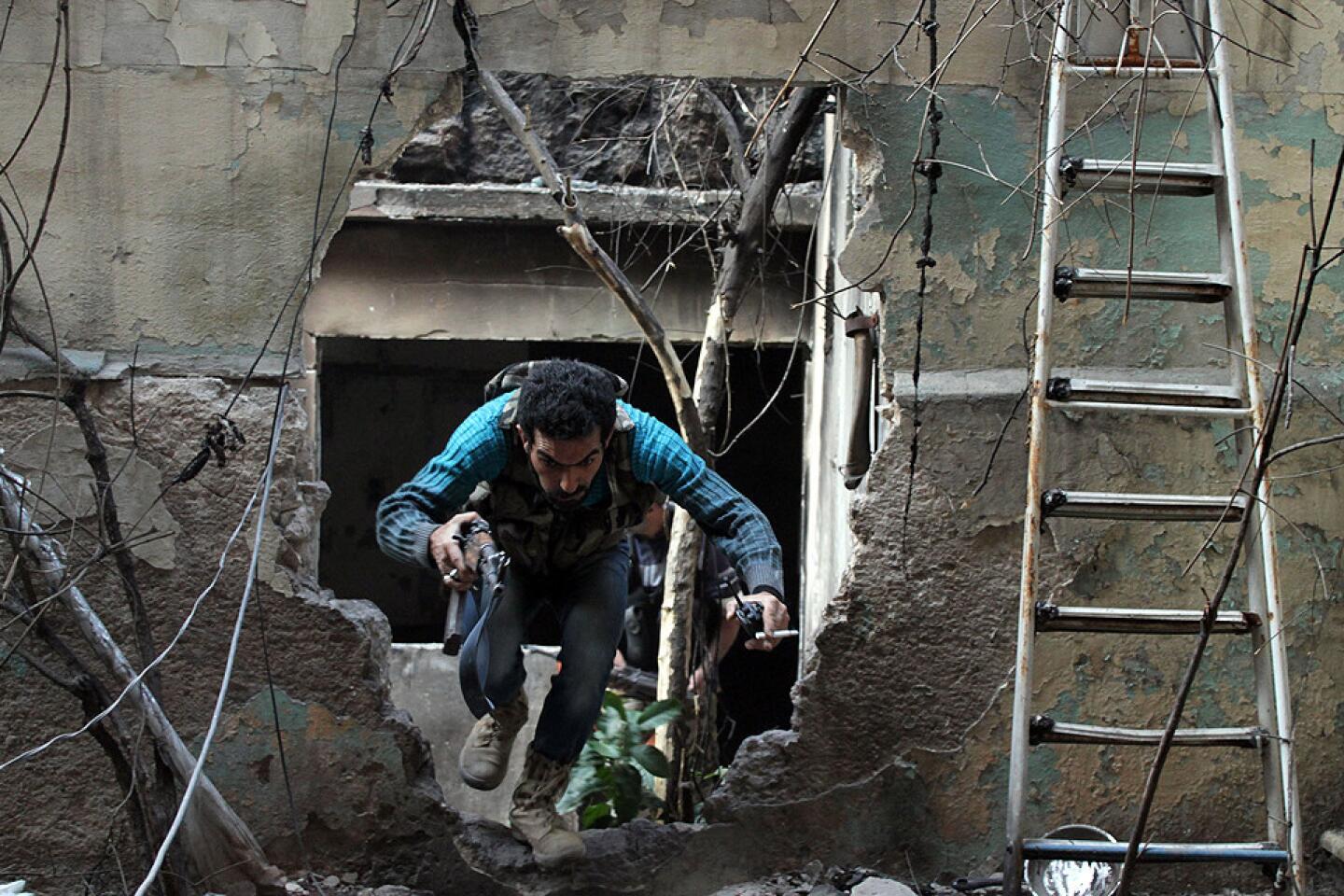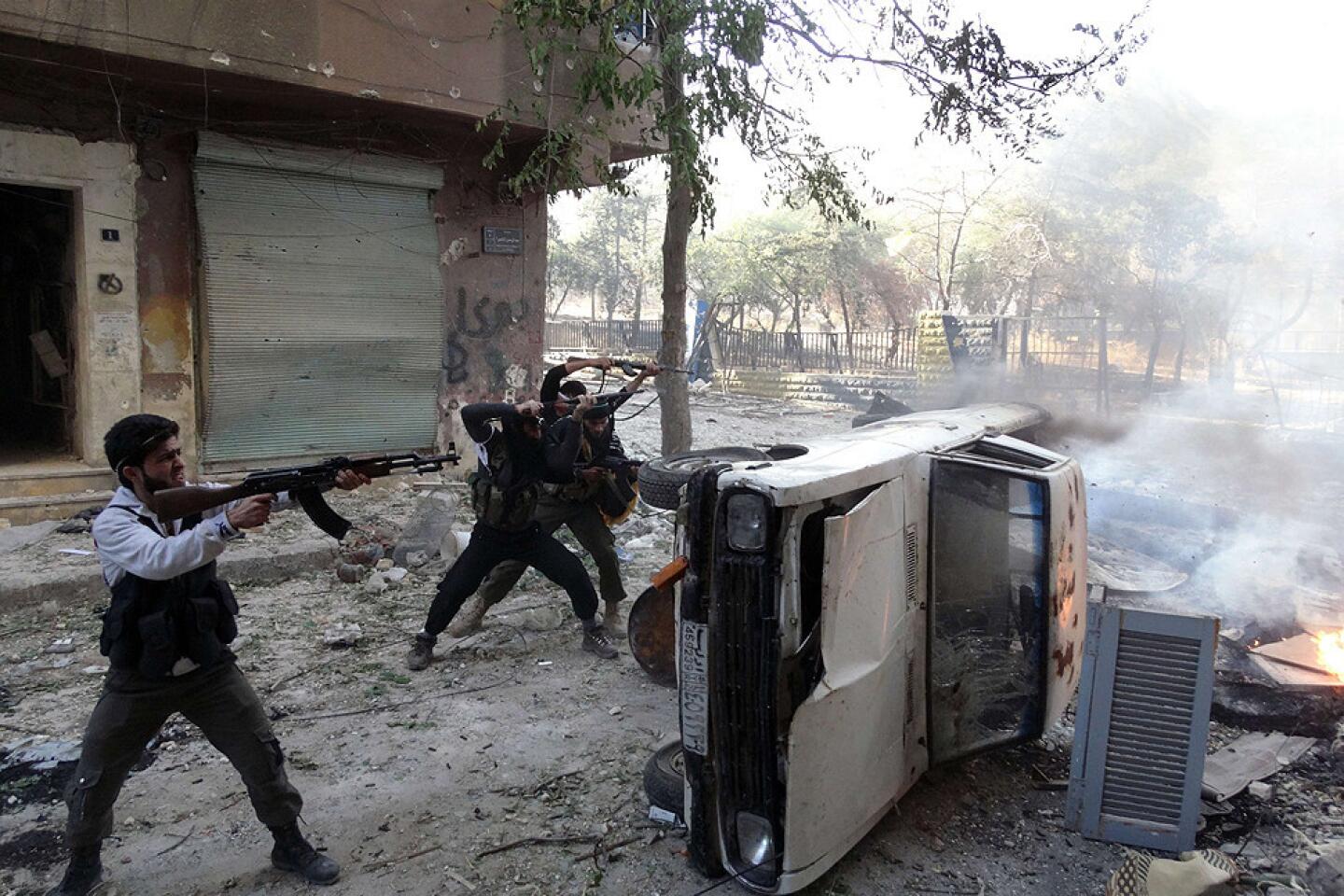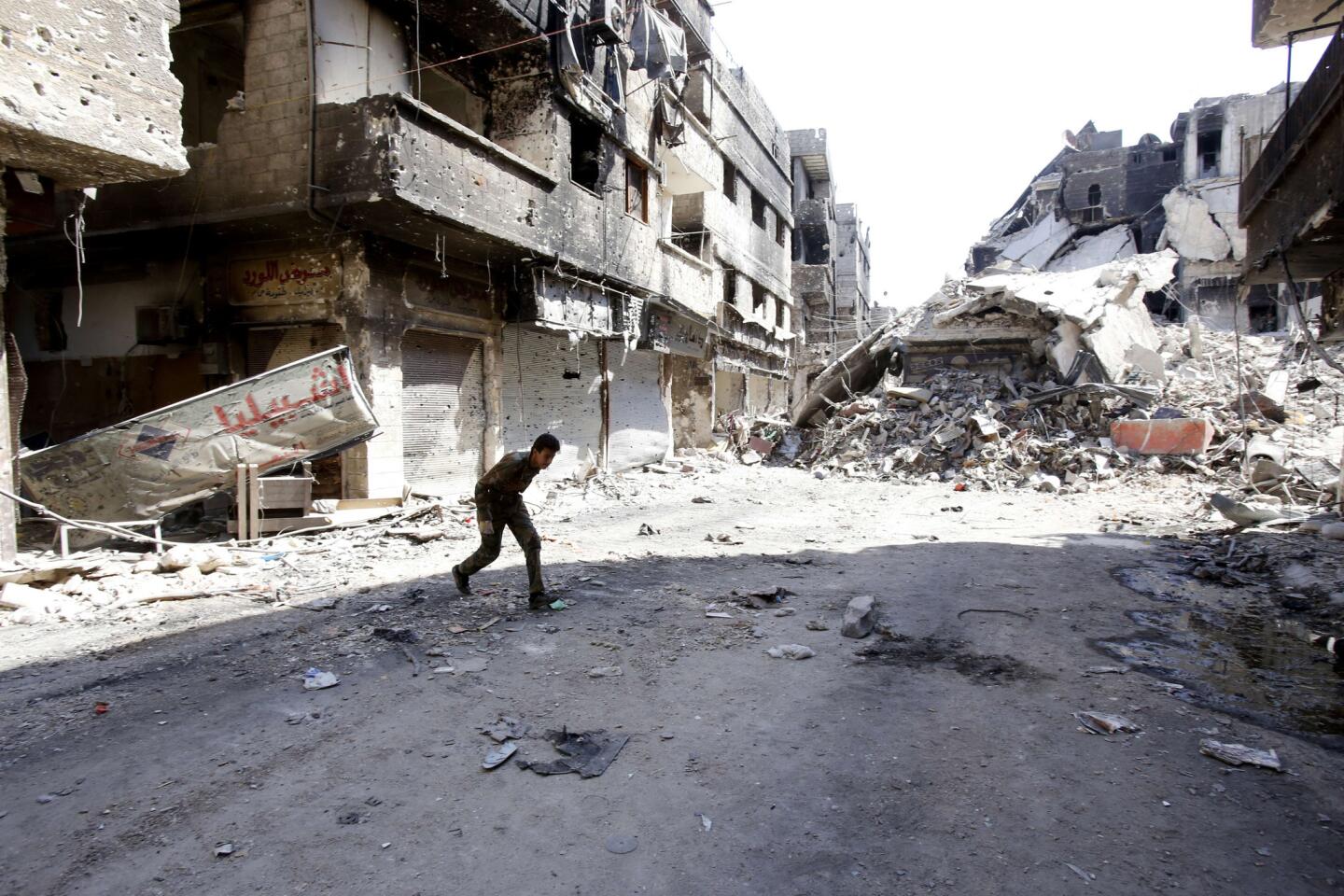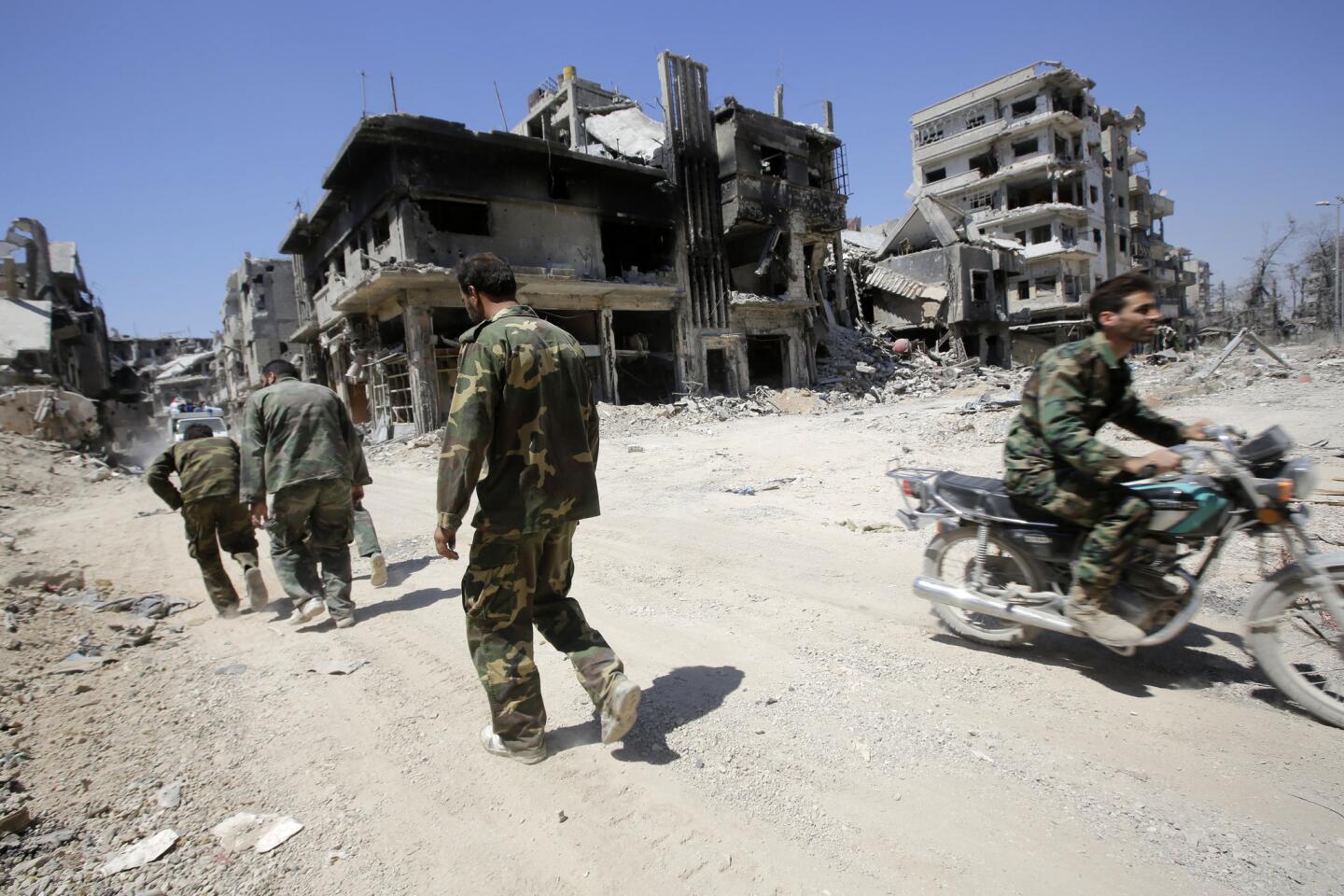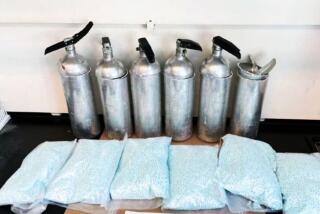Inspectors in Syria expect to meet key chemical disarmament deadline
WASHINGTON — International inspectors expect to destroy Syria’s ability to produce new chemical weapons by Nov. 1, the first major deadline in the United Nations-ordered disarmament of Syria’s chemical arsenal, officials said Wednesday.
The Organization for the Prohibition of Chemical Weapons, the watchdog group overseeing the disarmament, said equipment used to produce or mix toxic gases and nerve agents has been destroyed at almost all of the declared facilities in Syria.
OPCW spokesman Michael Luhan said Syrian authorities continued to provide “complete” cooperation to its team of 27 inspectors, and that the group was confident of achieving the first major milestone in the disarmament plan before the deadline.
Syria “will no longer have the capability to produce any more chemical weapons, and it will no longer have any working equipment to mix and to fill chemical weapons agent into munitions,” Luhan said at a news conference in The Hague.
The positive report reflected continuing progress in the U.S.-backed plan to destroy, dismantle or impound President Bashar Assad’s chemical weapons stockpile by mid-2014.
Since arriving in Syria this month, OPCW inspectors, escorted by Syrian forces, have visited 18 of 23 chemical weapons sites disclosed by Assad’s government and have had “good access” to the facilities in government-controlled areas, Luhan said.
But inspectors have yet to visit any sites in areas held by rebels battling to overthrow Assad, Luhan said. Last week, OPCW chief Ahmet Uzumcu said that inspectors had to cancel a visit to at least one abandoned site in a rebel-held zone because they were unable to obtain security guarantees.
Disabling the production and mixing equipment so far has involved low-tech methods such as smashing machines, clogging them with concrete or running over them with heavy vehicles. Officials still don’t have a clear plan for tackling the more complicated task of destroying or seizing Assad’s existing stockpile of sarin, mustard gas, VX and other toxins, which U.S. officials estimate to amount to about 1,100 tons.
Norwegian officials said Tuesday that they were considering a request by the U.N. and the OPCW to take most of Syria’s chemical stockpile to Norway for destruction.
On Wednesday, NATO and Russian officials signaled for the first time that they would be willing to cooperate in eliminating the chemical weapons in Syria. Despite the mistrust between Russia and the alliance, officials said after a meeting of defense chiefs in Brussels that the two sides could work together in destroying the chemicals if asked by the United Nations.
U.S. Defense Secretary Chuck Hagel said in Brussels that disarming Syria was one of “many areas of common interest” for the North Atlantic Treaty Organization and Russia. Aside from the U.S., Russia is the only country with the ability to destroy the chemicals on a large scale.
“If we can continue to see progress made, and I believe everybody believes we can, in destroying chemical weapons in Syria, then it seems to me that this is going to open opportunities for a lot of nations to play roles in Syria in order to accomplish the objective,” Hagel said.
Moscow previously said that it would be willing to guard weapons sites and destroy Assad’s stockpiles, but not to take the weapons into Russia. U.S. law prohibits the import of chemical weapons, and Hagel said that there were “no plans to have any U.S. forces in any way in Syria.”
Russia, Assad’s most powerful backer, brokered the deal with the United States last month that calls for Syria to eliminate its chemical weapons. The agreement shelved a U.S. threat of airstrikes against Assad’s government as punishment for an Aug. 21 chemical attack in opposition-controlled areas that U.S. officials say left more than 1,000 people dead.
More to Read
Start your day right
Sign up for Essential California for news, features and recommendations from the L.A. Times and beyond in your inbox six days a week.
You may occasionally receive promotional content from the Los Angeles Times.
